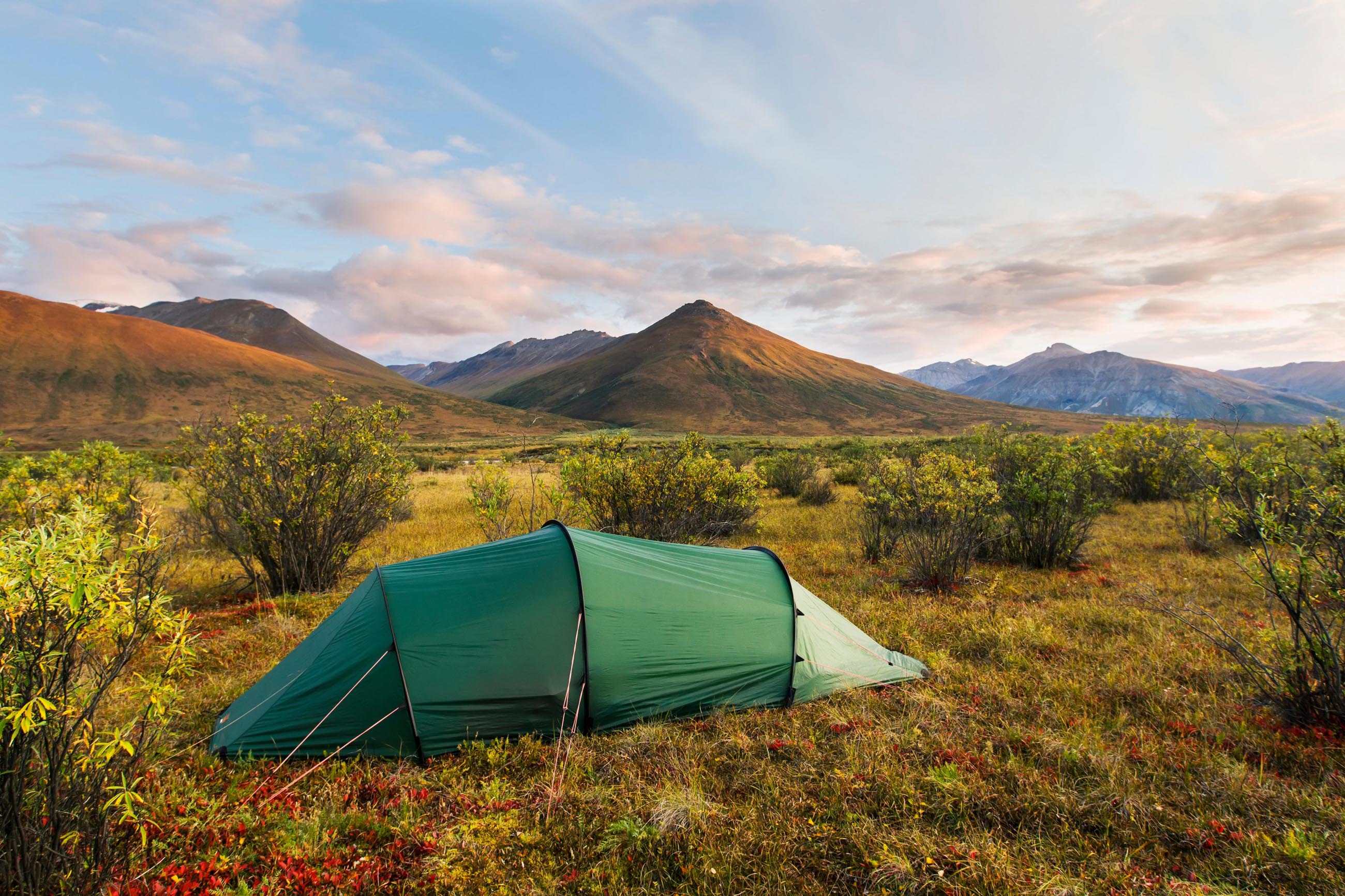Noatak National Preserve
This preserve protects the largest undisturbed river system remaining in the United States.
The remote and vast lands of Noatak National Preserve are located far above the Arctic Circle in a wilderness area bordered almost entirely by the Brooks Range. This 6.6 million acre preserve is the nation’s fourth largest wilderness area and protects the largest undisturbed watershed in North America – the 400 mile long Noatak River. Located northeast of Kotzebue, the preserve borders Gates of the Arctic National Park to the east and Kobuk Valley National Park to the south. The area in an important subsistence fishing, hunting, and gathering region for local Iñupiat people.
THINGS TO DO
Noatak National Preserve is a remote jewel in Alaska’s parklands: no roads enter the preserve, and access is only by air, boat, or dogsled/snowmachine in winter. The preserve is home to the the Noatak River, a designated Wild and Scenic River. As one of the least disturbed ecosystems in the world, it provides a unique opportunity for canoe and kayak trips.
Although this wilderness river can be floated from its headwaters in Gates of the Arctic National Park and Preserve to its outlet at Kotzebue Sound, it is possible to arrange for an aircraft pick-up at various locations in between. Most of the Noatak is characterized by gentle, slow-moving waters, but challenging stretches and rapids exist in the headwaters area. Paddlers should expect high winds throughout the year and short summers with cool, sunny weather.
Most visitors who float the Noatak River begin in Gates of the Arctic National Park and Preserve and end at Lake Matcherak, the village of Noatak, or Kotzebue. Float trips in this wild area feature views of the Brooks Range, expansive tundra, abundant wildlife, and class I – II rapids. The best time to float is from July to September. The river also offers opportunities to fish for salmon, pike, grayling, Dolly Varden, and sheefish.
For those with wilderness experience, Noatak offers endless opportunities for backcountry camping and hiking. Adventurous travelers can charter a plane for a drop-off in the heart of the preserve and then make their own route across the preserve’s tundra and mountains. Air charter operators in Kotzebue and Bettles also offer flightseeing trips over the preserve for a bird’s eye view of the vast, wild landscape.
WILDLIFE
The vast and open terrain along the Noatak River provides ample opportunities for viewing the preserve's wildlife. The Western Arctic caribou herd, numbering around 200,000 animals, migrates through the preserve on their spring and fall migrations. Other mammals include brown bears, moose, Arctic fox, wolves, lynx, musk ox, and Dall’s sheep. A variety of birds also call the preserve home, including geese, swans, loons, rough-legged hawks, gyrfalcons, and eagles.
LANDSCAPE
The Noatak River travels through the broad valley of the preserve, bordered by the Baird Mountains to the north and the and De Long Mountains to the south. The river, from its source in Gates of the Arctic National Park and Preserve to its confluence with the Kelly River in the preserve, is part of the National Wild and Scenic Rivers System.
The Noatak River passes through six regions on its way to the sea: headwaters at the base of Igikpal Mountain; the great Noatak Basin with its rounded mountains and plentiful wildlife; the 65-mile-long Grand Canyon of the Noatak and the much steeper 7-mile Noatak Canyon; plains dotted with spruce, balsam, and poplar; the rolling Igichuk Hills; and finally, the flat coastal delta.
HISTORY
Archaeological research has revealed the Noatak National Preserve has been home to the Iñupiat people for over 11,000 years. The area became a national monument in 1978 and a national preserve in 1980 when President Jimmy Carter signed the Alaska National Interest Lands Conservation Act (ANILCA).
FACILITIES AND CAMPING
The Noatak National Preserve is one of the finest wilderness areas in the world and has no roads, trails, designative camping areas, visitor facilities, or administrative offices within the preserve. Backcountry camping is permitted. The Northwest Arctic Heritage Center in Kotzebue provides information on Noatak National Preserve and can provide suggestions for float trips and backcountry camping and hiking.
GETTING HERE
Access to the preserve is from Bettles or Kotzebue. In the summer, visitors may access the park by chartered flight or boat. In the winter, access is by plane, snowmachine, or dogsled. There is no road access to Noatak National Preserve. In the summer, scheduled air service is available from Anchorage to Kotzebue and Fairbanks to Bettles.
Learn more about nearby Gates of the Arctic National Park and Preserve.
For more information, visit the Noatak National Preserve website.

Local Climate & Weather
For Alaska's day-to-day weather, it’s best to plan for a bit of everything. Learn more about weather in this area.
Travel Inspiration
#TravelAlaska
#TravelAlaska
 @lucmehl
@lucmehl
 @alaskanps
@alaskanps
 @taro.villagestone
@taro.villagestone
 @alaskagurus
@alaskagurus

